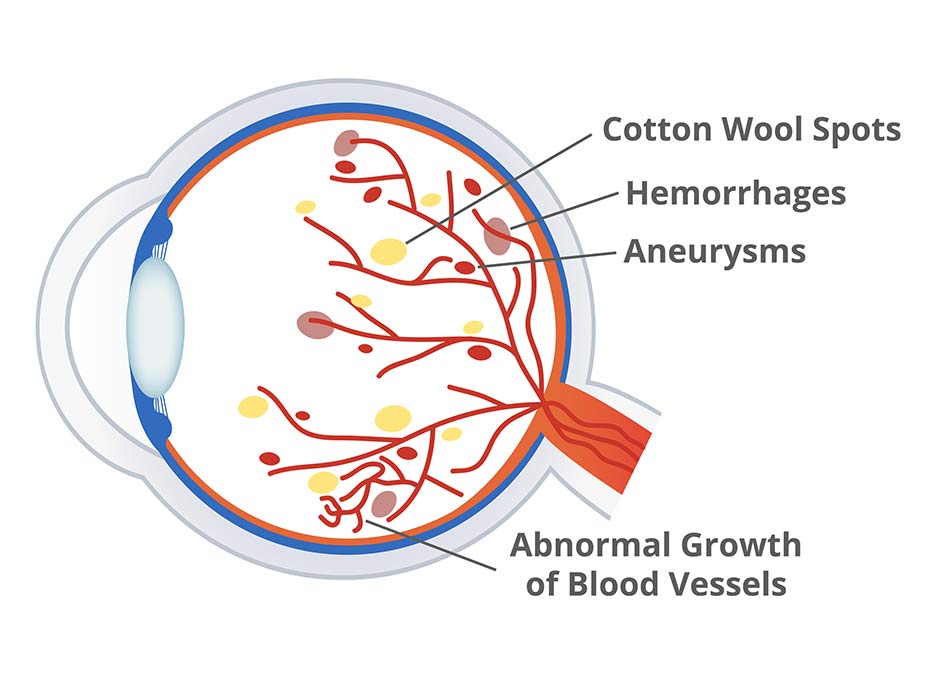Diabetic Eye Exam
Herndon, VA
You have almost certainly heard of diabetes, which is one of the most common chronic health conditions in the United States with an estimated 100 million adults currently living with diabetes or pre-diabetes. This metabolic disorder occurs when the body is no longer able to regulate its blood sugar levels and requires intervention to keep them stable.
Most people are aware that diabetes can have serious consequences for our health. However, you may be surprised to learn that it can also influence our vision. This is because diabetic patients can develop a complication known as diabetic retinopathy. Without prompt treatment, diabetic retinopathy can cause permanent vision loss. For this reason, diabetic patients should have regular diabetic eye exams.

What is diabetic retinopathy?
To see clearly, our eyes need to be healthy and function perfectly. The most important component of our eyes is the retina. Located at the back of the eye, the retina is a patch of light-sensitive cells that converts incoming light into messages sent to the brain via the optic nerve. Our brain then tells us what we can see and how clearly we can see it.
The retina relies on a continuous blood supply, which is delivered using a network of tiny blood vessels. Over time, having continuously high blood sugar can damage these blood vessels, causing blood and other fluids to leak into the retina. If this happens, scarring may occur which could compromise your vision quality.
Am I at risk of diabetic retinopathy?
Technically, anyone who suffers from diabetes, whether it be Type 1 or Type 2, could be at risk of developing diabetic retinopathy. However, the condition is more likely in certain situations, including:
- Your blood sugar levels are uncontrolled or poorly controlled
- You have a long history of diabetes
- You have high blood pressure (hypertension)
- You suffer from high cholesterol
- You are pregnant
During regular diabetic eye exams in Herndon, Dr. Khaldieh will monitor your condition to detect and treat any signs of diabetic retinopathy as soon as they appear.
What to expect during a diabetic eye exam
The process of a diabetic eye exam is very simple and straightforward. In most instances, it is included as a part of your comprehensive eye exam, and you may not even realize that you have had a specific test to check for diabetes-related complications.
Diabetic eye screening is non-invasive. You will be given eye drops which will blur your vision. These may sting a little when administered, but this will pass within a few moments. Once your vision is blurred, you will be asked to rest your head on the device and stare into a lens. This leads to a camera that will take images of the backs of your eyes so that your eye doctor can assess the structures, which include the retina, for any abnormalities. You will see a flash when each image is taken, but you shouldn’t feel any pain.
In addition to these images, you will also be given a visual acuity test. You will be asked to read letters off a chart a short distance away as well as read from a card held in front of you.
During this eye examination, Dr. Khaldieh will be able to determine if you are experiencing any of the symptoms of diabetic retinopathy. If so, he will discuss treatment options tailored to your needs, which may include controlling your diabetes more effectively, taking medications, or more invasive treatment to preserve your vision. Our eye doctor will give you more specific information based on your individual circumstances.
If you have further questions about diabetic-related eye exams, please contact our knowledgeable eye care team or schedule an appointment online.
